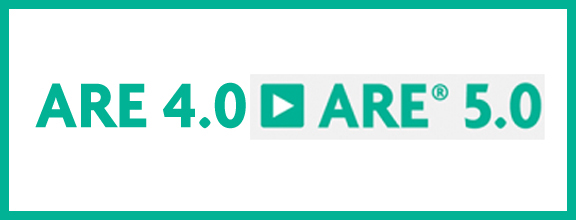ARE transition makes for some difficult decisions on when to transition to ARE 5, like is there enough study materials for ARE 5 yet? Well more reason to stick with ARE 4. If you are starting in ARE 5, but maybe you have a bunch of old ARE 4 materials already, that is not the end of the world. Do you just buy all new materials, or can you supplement in areas you need more information on. How do you know what to study for the new ARE 5 sections?
Never fear, these ARE 4.0 materials are not totally wasted. NCARB has stated that ARE 4 materials can be used just as effectively if you know how they translate into ARE 5 categories. Here is a quick break down of how the ARE 4 translates to ARE 5.
|
|
|
| 5.0 Practice Management | 4.0 Construction Documents & Services | Programming, Planning & Practice |
|
|
|
| 5.0 Project Management | 4.0 Construction Documents & Services | Programming, Planning & Practice |
|
|
|
| 5.0 Programming & Analysis | 4.0 Programming, Planning & Practice | Site Planning & Design |
|
|
|
| 5.0 Project Planning & Design | 4.0 Site Planning & Design | Building Design & Construction Systems | Structural Systems | Building Systems | Schematic Design |
|
|
|
| 5.0 Project Development & Documentation | 4.0 Construction Documents & Services | Building Design & Construction Systems | Structural Systems | Building Systems |
|
|
|
| 5.0 Construction & Evaluation | 4.0 Construction Documents & Services |
|
|
|
Also you can compare the ARE 4 Exam Guides content areas to the ARE 5 handbook content areas, you can find this information on NCARB’s website.
ARE 4.0
- Subject specific
- More memorization needed to pass
- Challenging vignette software
- Some material unnecessary for real-world practice and competency
ARE 5.0
- Topics are more integrated as you would find problems in actual architectural practice
- Less memorization, more about understanding concepts and logic
- More of a graphic test with diagrams, drawings and images integrated into multiple choice. I found this to be better and easier to engage with than the all-text multiple choice/fill-ins found in 4.0
- These tests are organized according to what you would do in a particular design phase
- Formulas/equations are available as reference while taking the test, so you can focus on nailing the concept, rather than memorizing equations.
Advice on studying:
I used the Ballast ARE 5.0 review manual, though I’m not sure that this was necessary. Ballast essentially just reshuffled past 4.0 material into 5.0 categories. If you already have a good amount of 4.0 material, I would just go through NCARB’s 5.0 prep/guidelines PDF, take note of the topics covered in your exam, and then find the topics in the 4.0 exam material. I took a lot of 4.0 practice exams from Kaplan and Ballast in the relevant subjects for PPD and this helped A LOT.
I would also spend a bit of time on NCARB’s demo exam. Although there are only 20 questions, it is important to familiarise yourself with the reference tabs at the top and go through the equations/formulas and make sure you know what they are and how to use them for a particular question.
Also note: there are 120 questions with the PPD exam. I did not realise that this included the Case Study questions. So roughly, 20 of the 120 questions are case study questions. I would advise that you save a good amount of time for these case study questions because they require more reading and digging around through references like building or zoning codes, for example. I would recommend 90 minutes for Case Studies to be on the safe side, so plan accordingly! You book your own test break with ARE 5.0, so there is not a natural break between the exam questions and the case studies like there was between the exam questions and the vignette in ARE 4.0. So keep this in mind and strategize!
As far as moving quickly through the reference material in the case studies, I would also recommend taking advantage of the search bar at the bottom of the window to look for key words that you are looking for. In some cases this saved me time. I finished the exam with 2 minutes to spare, which didn’t really leave me much time to go back. Also be mindful of a bit of lag when you click between case study questions. The software is not perfected yet, so as I said before, I would recommend allocating a good amount of time to get through these questions.
Overall, it was a good experience. There is now a far better relationship between professional practice and the material covered on the exam. The test seemed to be more natural and pragmatic and at the end of the day I’m glad I made the transition!

